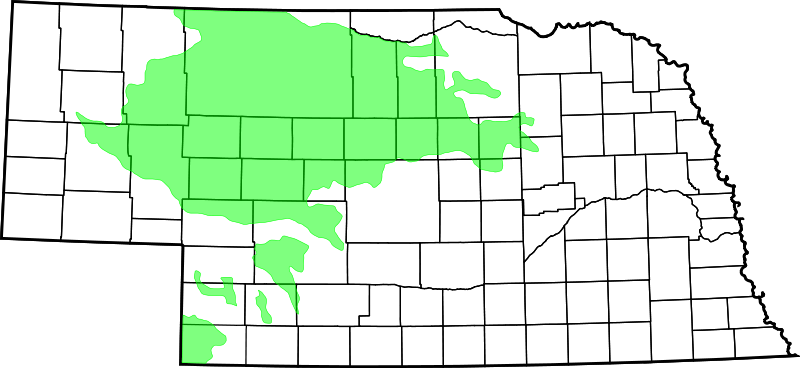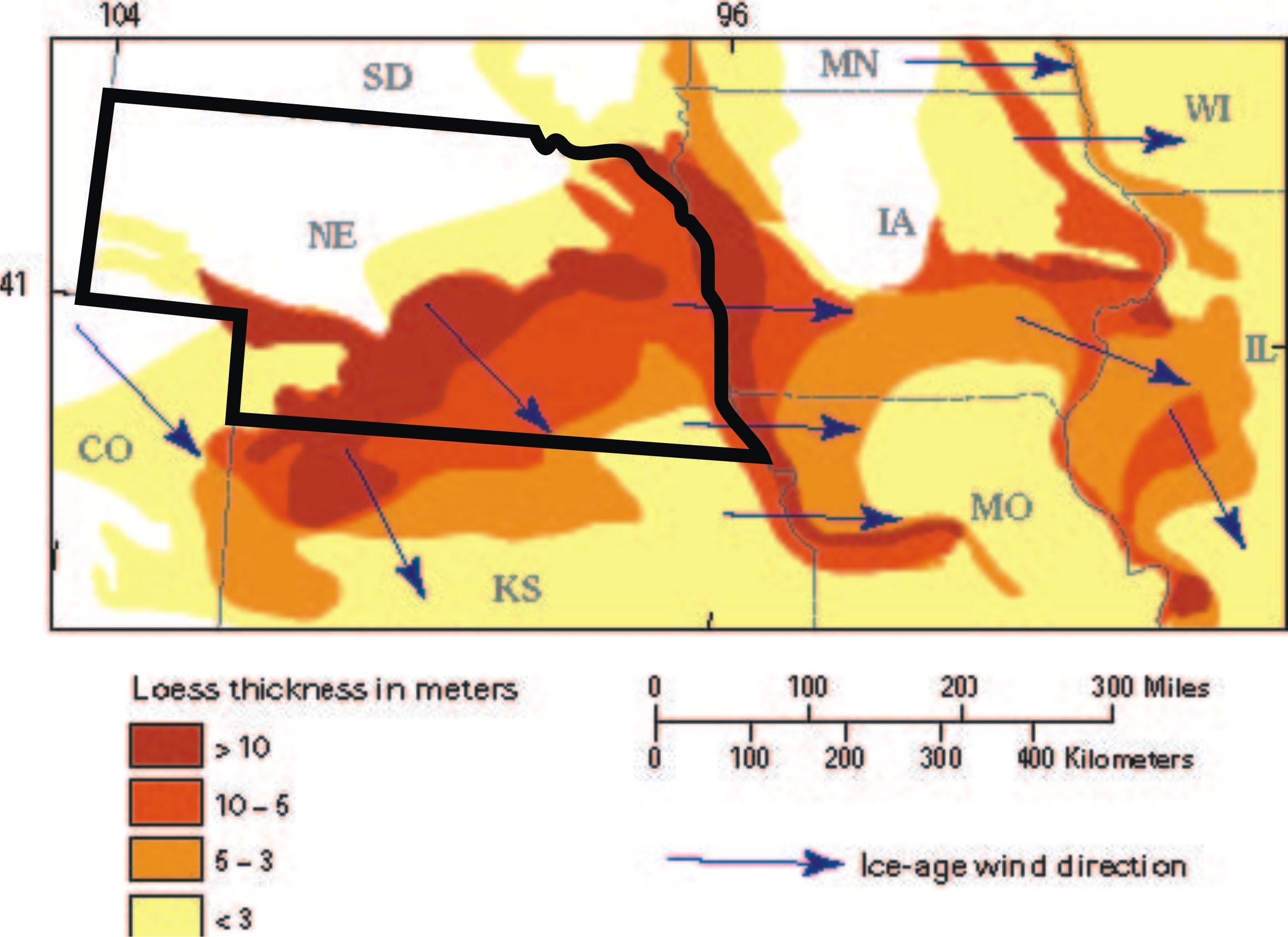Nebraska During the Cenozoic Era
The
Cenozoic Era in Nebraska is divided into the Paleogene and Neogene Periods. The Paleogene Period contains the Paleocene, Eocene, and Oligocene Epochs (65 to 23 million years ago). The Neogene Period contains the Miocene, Pliocene, Pleistocene, Holocene Epochs (23 million years ago until the present).
Rocks and sediments of the Cenozoic Era cover most of
the state and dominate the visible geology. Three major groups of Cenozoic rock are
preserved in Nebraska: the White River Group, Arikaree Group and Ogallala Group. See the diagrams below for more information about these rocks and where they can be found in Nebraska.


Nebraska during the Pleistocene (the Ice Age)-Present
More recent sediments in Nebraska (i.e. Pleistocene and Holocene) record the actions of continental glaciers (i.e. glacial till), as well as migrating sand dunes and windblown silt (called loess).
During the Pleistocene, debris carried by glacial ice (called till) was deposited across eastern Nebraska. Geological evidence suggests large continental ice sheetscovered parts of eastern Nebraska at least twice during the Pleistocene.
The distribution of glacial till deposits in Nebraska |
The
Nebraska Sand Hills cover almost 20,000 square miles in west-central Nebraska.
The hills are large vegetated sand dunes, which are part of the largest "sand sea" in the Western Hemisphere. By studying these sand dunes, scientists have been able to reconstruct the climate of Nebraska during the past 10,000 years.
For More information click HERE.
 |
Map of sand dune distribution in Nebraska. Picture from http://en.wikipedia.org/wiki/File:Map_of_Nebraska_Sand_Hills.svg |
 |
The sand dunes in western Nebraska. Photograph by Nebraska Aland Magazine/Nebraska Game and Parks Commission. The website is http://www.nationalgeographic.com/wildworld/profiles/photos/na/na0809a.html |
Loess is windblown silt that often forms in dry environments; deposits of loess are common around the margins of glaciers. Along the Missouri River in the Omaha reign are distinctive bluffs composed of loess. During the Pleistocene, thick accumulations of loess formed around the margins of the large continental ice sheets. Besides the central United States, thick loess deposits can be found in China and central Europe.
 |
Loess deposits and Ice-age wind direction in Nebraska. |
For more information about Cenozoic rocks of Nebraska, see Swinehart, J.B., Souders, V.L., DeGraw, H.M., Diffendal, R.F., (1985), Cenozoic Paleogeography of Western Nebraska, in Flores, R.M., and Kaplan, S.S., eds., Cenozoic paleogeography of west-central United States: Rocky Mountain Paleogeography Symposium 3, Rocky Mountain Section: Tulsa, Society of Economic Paleontologists and Mineralogists, p.209-229.
For more information about geology locations in Nebraska (from many geological time periods), see Maher, H., Engelmann, G., and Shuster, R., (2003 and references therein), Roadside Geology of Nebraska, Mountain Press Publishing Company, p43-76.